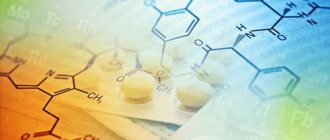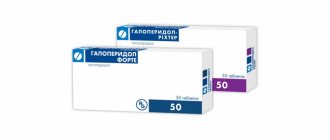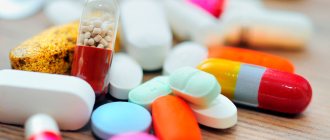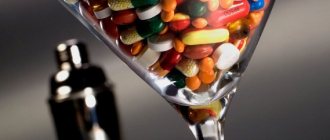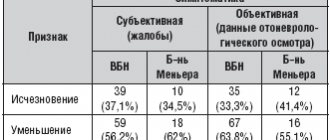Anonymously
Around the clock
Attention! The material contains information about substances, the use of which can cause serious harm to your health!
Neuroleptics are antipsychotic drugs that are used to treat severe mental conditions such as mania, hallucinosis, or psychosis. Despite their widespread use in medical practice, tranquilizers are also used to achieve a drug “high”: this leads to the development of severe pharmaceutical dependence.
- What are neuroleptics?
- The effect of neuroleptics on the body
- Signs of antipsychotic drug use
- Side effects from antipsychotics
- Contraindications
- Types of antipsychotics
- Typical antipsychotics
- Atypical antipsychotics
- New generation neuroleptics
- The safest antipsychotic
- Neuroleptics without sedation
- List of antipsychotics
- First generation neuroleptics
- Second generation neuroleptics
- Neuroleptics of the latest generation
- Consequences of neuroleptics
- Neuroleptics and alcohol
- Antipsychotic drug poisoning
- Dyskinesia from neuroleptics
- Insomnia
- Disorders of the nervous system
- Overdose of antipsychotics
- FAQ
- When are antipsychotics prescribed?
- What is neuroleptic syndrome?
- Can you buy antipsychotics without a prescription?
- How to get off antipsychotics? Help from specialists at the Zdravnitsa clinic
Treatment prices:
| Service | Price, rub) |
| Types of therapies | |
| Standard detoxification therapy | 3 500 ₽ |
| Double Detox Therapy | 6 000 ₽ |
| Enhanced Detoxification Therapy | 7 500 ₽ |
| Maximum detoxification therapy | 9 500 ₽ |
| Quick sobering up at home | 7 500 ₽ |
| Hospital at home 1 day | 22 000 ₽ |
| Advanced hospitalization | 15 000 ₽ |
| Treatment in hospital | |
| Accommodation | |
| Economy chamber (6 beds) | 2 000 ₽ |
| Standard room (4 beds) | 3 000 ₽ |
| Increased comfort (2 seater) | 5 500 ₽ |
| VIP chamber (1 person) | 12 500 ₽ |
| Individual post 24/7 | 5 000 ₽ |
| Medical and social rehabilitation 21 days | 140 000 ₽ |
| Service | Price, rub) |
| Initial consultation with a narcologist | for free |
| Consultation with a psychologist | 3 000 ₽ |
| Psychiatrist consultation | 5 000 ₽ |
| Coding at home Torpedo | 7 500 ₽ |
| Express output and encoding (doublet) | 13 500 ₽ |
| Coding using the Dovzhenko method | 12 000 ₽ |
| Hypnosis classic session | 13 000 ₽ |
| Ericksonian hypnosis session (NLP) | 8 000 ₽ |
| Coding method Torpedo | 5 500 ₽ |
| Double block | 8 000 ₽ |
| Esperal injection for 1 year | 9 900 ₽ |
| Tetlong for 3 months | 10 500 ₽ |
| Esperal gel for 1 year | 15 000 ₽ |
| Selincro course of therapy | 12 500 ₽ |
| Implantation of Disulfiram for 1 year | 18 000 ₽ |
| Vivitrol injection for 1 month | 26 000 ₽ |
| Naltrexone stitching for 3 months | 35 000 ₽ |
| Neuroimplantation Prodetoxon for 6 months | 47 500 ₽ |
| Narcopsychotherapy session | 50 000 ₽ |
| Neutralization of encoding | specify |
| Psychodiagnostics / pathological diagnostics | 7 500 ₽ |
| Psychotherapy session | 5 000 ₽ |
| Family psychotherapy | 6 000 ₽ |
| Outpatient rehabilitation in Moscow | 33 000 ₽ |
Expand
We will select an individual treatment plan
Free consultation 8-800-200-27-23
Signs of antipsychotic drug use
To reduce the side effects of antipsychotic drugs, antidepressants and other stimulants are used in psychiatric practice. The selection of relevant pharmaceuticals requires a long time and careful monitoring by medical personnel.
Recreational use of tranquilizers leads to dramatic changes in a person's appearance and behavior. If the behavior and appearance of a loved one has changed, you should pay attention to the following symptoms of drug addiction:
- Reduced reaction speed, general inhibition;
- Slow speech;
- drooping eyelids;
- Drowsiness, hypersomnia;
- Sudden weight loss or gain;
- Pallor of the skin and mucous membranes;
- Decreased intellectual abilities;
- General negligence of appearance. Due to weakness, the addict neglects personal hygiene, cleaning the apartment, and so on.
Some drug addicts combine taking tranquilizers with alcohol. As a result of this combination, the liver is destroyed, which leads to serious illness and changes in appearance: brittle hair, nail plates, yellowing of the skin, and so on.
MOTIVATION OF A DEPENDENT FOR TREATMENT
Glossary of terms
Genetic characteristics are characteristics of a person that are mediated by his genotype.
A medicinal product (MD) is a medicinal product in the form of a dosage form used for the prevention, diagnosis, treatment of a disease, rehabilitation, for the preservation, prevention or termination of pregnancy (Federal Law of April 12, 2010 No. 61-FZ “On the Circulation of Medicines”) . Markers are biological characteristics that are used as an indicator in the human body. Neuroleptics are psychotropic drugs that eliminate delusions, hallucinations and other manifestations of psychosis. SNP replacement of one nucleotide in DNA, single nucleotide polymorphism. Features of gender are features of a person that are associated with his gender. PCR polymerase chain reaction, an experimental method of molecular biology, a method for significantly increasing small concentrations of certain nucleic acid (DNA) fragments in biological material (sample). Resistance to drugs - resistance of the body to certain drugs. Restriction analysis determines the sites of cleavage of a specific DNA nucleotide sequence by one or more restriction enzymes. The cytochrome P450 family is a complex system that consists of different isoforms of cytochrome P450, located in the liver and responsible for the metabolism of various compounds. Pharmacogenetics is a branch of clinical pharmacology that studies the role of genetic factors in shaping the human body’s response to a drug (drug). Pharmacodynamics is a branch of pharmacology that studies the localization, mechanism of action and pharmacological effects of drugs. Pharmacokinetics is a branch of pharmacology that studies the processes of absorption, excretion, distribution and metabolism of drugs. Pharmacological response is the body's response to the administration of a specific drug. Phenotype is a set of characteristics and biological properties of an organism that are determined by the genotype and environment. Schizophrenia is a mental personality disorder that results in a breakdown of thinking processes and emotional reactions. (PharmGKB was used to write the definitions).
Different allelic variants of a gene can significantly influence the proteins they encode and, subsequently, the pharmacological response. These include: biotransformation enzymes, transporters, target molecules, proteins that are associated with target molecules. The actions of these proteins together shape the response to treatment. SNPs are either a substitution, an insertion, or a deletion of a single nucleotide. It is the SNPs that are responsible for changing the pharmacological response to the drug as a whole. Here, different options for the development of a pharmacological response are possible: either the drug has too powerful an effect on the patient, which leads to a greater severity of side effects, or the patient is prone to developing resistance, that is, not susceptible to the action of this drug, or the patient has all parameters within the limits the designated norm. In the first case, doctors try to select a medicine with the smallest range of side effects or significantly reduce the dosage. In the second case, they analyze which specific drugs the patient may develop resistance to. And in the third case, doctors simply select the drug and prescribe the dosage according to the standard [1].
Side effects from antipsychotics
The doctor prescribes antipsychotics based on the patient's medical history and current condition. Vigilance helps minimize the harm of antipsychotics. Independent, inept use of drugs leads to adverse reactions, the development of addiction and undesirable mental states. Due to recreational use, addicts face the following side effects:
- General excitement;
- Anxiety;
- Uncontrollable desire to move due to discomfort in the limbs;
- Impaired liver and kidney function;
- Hypersomnia;
- Sleep disturbances;
- Endocrine disorders, incl. development of metabolic disorders leading to weight gain;
- Diseases of the cardiovascular system.
Pharmacogenetic testing
In order to detect allelic variants of the genes discussed above, it is necessary to conduct pharmacogenetic testing, which is carried out only with the consent of the patient or his representative. Before this, the psychiatrist talks in detail about what pharmacogenetic testing is, why and how it is carried out, why it is necessary and what the results of this test will give. The biological material can be blood, saliva, scraping of the buccal epithelium. Testing is carried out in several stages:
- Isolation of DNA from the submitted sample of the patient’s biological material.
- Carrying out polymerase chain reaction (PCR).
- If necessary, perform restriction analysis.
- Identifying and describing results.
After receiving the results, a detailed report is drawn up, which necessarily includes a list and explanation of the allelic variants found, which medications are suitable for the patient, and which should not be used [1].
Contraindications
Antipsychotics should not be taken simultaneously with alcoholic beverages. Some drugs should not be used during pregnancy and lactation, or for people with acute heart, kidney or liver diseases. Each drug has its own list of contraindications. In this regard, the over-the-counter sale of antipsychotics is strictly prohibited.
Ambulatory treatment
Types of antipsychotics
There are several types of tranquilizers that are used to treat mental disorders, as well as for premedication before surgery.
Typical antipsychotics
Typical antipsychotics are effective in suppressing severe mental conditions but cause chronic fatigue syndrome. These include Haloperidol, Chlorprothixene, Sulpiride, Chlorpromazine and other medications.
Find out treatment recommendations without leaving home for free
To select a treatment plan, you just need to leave a request, we will contact you to select the time and specialist you need
Submit your application
Atypical antipsychotics
Unlike typical ones, such antipsychotics have a milder effect and are easier to tolerate. Due to the peculiarities of their effect on the dopamine system, atypical drugs do not cause severe inhibition and have a less extensive list of side effects.
New generation neuroleptics
The pharmaceutical market is replenished with new generation drugs that have a gentler effect on the patient. The fact is that in severe mental illnesses, antipsychotics are taken for life. To minimize side effects, newer drugs combine CNS depression and low hepatotoxicity.
The safest antipsychotic
To select the safest group of tranquilizers, the doctor relies on the following factors:
- Preference for new generation drugs;
- Presence of kidney, liver, etc. diseases;
- Tendency to develop certain pathologies;
- Determination of a safe dose of the drug.
The doctor prescribes the safest tranquilizers that do not harm the patient and help normalize well-being. Taking antipsychotics without taking into account the rules for using such drugs only leads to adverse reactions.
Neuroleptics without sedation
Second generation drugs do not cause severe sedation. Taking them promotes healthy sleep and relief from mania: at the same time, a person’s sanity is preserved. Despite this, excessive use leads to the development of pharmaceutical addiction.
Antidepressants and anxiolytics: advantages and disadvantages
Two classes of PS deserve the greatest attention - antidepressants and anxiolytics due to their effectiveness in various nosologies, the ability to minimize undesirable effects, making therapy as safe as possible, ease and flexibility of use, relatively good knowledge, and therefore more frequent prescription. Antidepressants are the most actively developing group of PS; their number today amounts to many dozens. Antidepressants or thymoanaleptics improve pathologically depressed mood, as well as the general condition of patients by reducing ideomotor and somato-vegetative disorders caused by depression. Moreover, these drugs do not increase normal mood and do not exhibit psychostimulating effects. Some antidepressants have anti-anxiety, sedative, hypnotic, and antiphobic properties. There are various classifications of antidepressants according to their chemical structure, mechanism of action, and spectrum of psychotropic activity, depending on the area of application and the risk of side effects. According to the mechanism of action, antidepressants are divided into: monoamine oxidase (MAO) inhibitors, and therefore inhibiting the deamination of norepinephrine and serotonin (mainly hydrazine derivatives, for example, nialamide), and blockers of the neuronal reuptake of these mediators (the so-called tricyclic antidepressants (TCAs) - amitriptyline , nortriptyline, imizin, doxepin, clomipramine, imipramine, etc.). These are first-generation drugs that are effective against a wide range of depression - from severe to subsyndromal. Second-generation drugs have been synthesized, which differ in their mechanism of action from the above-described “typical” antidepressants. They are called “atypical” and include selective serotonin reuptake inhibitors (SSRIs) – fluoxetine, paroxetine, citalopram; selective serotonin reuptake stimulators (SSRSs) – tianeptine; reversible inhibitors of monoamine oxidase type A (MOMAO-A) – pyrazidol, moclobemide; selective norepinephrine reuptake blockers (SNRBs) – maprotiline, mianserin; selective blockers of presynaptic dopamine uptake - amineptine, bupropion. Drugs in this group are active against mild to moderate depression. Due to differences in the chemical structure and mechanism of action, antidepressants are also divided by area of application (according to the classification of Academician of the Russian Academy of Medical Sciences, Prof. A.B. Smulevich). The latest generation of drugs are classified as first-line drugs for use in general medical practice. They have selective psychotropic activity, good tolerability and safety profiles, a low risk of adverse interaction with somatotropic drugs, minimal toxic effects on the fetus, and ease of use. All this became possible due to an increase in the specificity of the biochemical action of these antidepressants or a maximum reduction in their effect on the receptors with which the development of side effects is associated. TCAs and MAOIs are second-line drugs for use in specialized psychiatric medical institutions. They are prescribed mainly for severe forms of depression, when, despite the adverse events that occur during treatment, their powerful psychotropic effect is necessary. However, the clinical use of an antidepressant cannot be based only on general recommendations; the goal when choosing a drug is to individualize the patient’s treatment regimen. Age, the nature of the course of the disease, concomitant somatic pathology and concomitant treatment, the characteristics of the therapeutic effect of a particular drug, including somatoregulatory, individual sensitivity to PS, the patient’s personal qualities, etc. must be taken into account. In addition, in general medical practice, when treatment must be carried out in on an outpatient basis, in the form of long courses, when the patient is a working person, one cannot but pay attention to the frequency of administration, compliance and side effects. Preference is, of course, given to modern means with a frequency of use no more than 1-2 times a day, which does not significantly disrupt the patients’ daily routine. The coordination of the actions of the doctor and the patient is undeniably important, since compliance with recommendations is the key to the success of the therapy. TCAs have the most pronounced side effects. Due to their strong anticholinergic effect, dry mucous membranes, constipation, urinary retention, accommodation disturbances, and changes in heart rate often occur (this is why contraindications to the use of TCAs are glaucoma, prostate adenoma, and cardiac arrhythmias). In addition, attention should be paid to bradycardia, arterial hypotension and behavioral toxicity phenomena, such as disruption of the sleep-wake cycle and daytime sleepiness, impaired fine coordination of movements, decreased attention, memory, and spatial orientation. It is the first-line drugs that have a higher risk of cardiotoxic, hepatotoxic, neurotoxic effects, as well as effects on sexual functions. In addition, TCAs interact undesirably with many somatotropic drugs (thyroid and steroid hormones, some antiarrhythmic drugs, cardiac glycosides, etc.). It is also necessary to remember about drug dependence and withdrawal syndrome. Anxiolytics (from Latin anxius - “anxious” and Greek lysis - “dissolution”), ataractics or tranquilizers (from Latin tranquillium - “calm”) appeared on the pharmaceutical market somewhat later than antidepressants. In the 60s In the 20th century, the first drugs of this group were introduced into clinical practice - meprobamate, chlordiazepoxide, diazepam, after which more than 100 active compounds were synthesized and they are still being improved and new, more effective ones are being searched for. Among PS, tranquilizers are practically the most widely used drugs both in hospitals and especially in outpatient practice. There are different classifications of anxiolytics: 1) according to the severity of the sedative effect: - with a pronounced sedative (hypnosedative) effect - gindarine, amixide, chlordiazepoxide, phenazepam, benactizine, some benzodiazepine derivatives, etc.; – with a slight sedative effect (alprazolam, benzoclidine, oxazepam, etc.); – “daytime” tranquilizers with a predominant anxiolytic effect and minimal sedative or even mild stimulating effects (gidazepam, mebicar, prazepam); 2) by chemical structure: – benzodiazepine derivatives (long-acting – diazepam, phenazepam, cinazepam; medium-acting – chlordiazepoxide, lorazepam, nozepam; short-acting – midazolam, triazolam); – derivatives of diphenylmethane (benactizine, hydroxyzine, deprole) and 3-methoxybenzoic acid (trioxazine); – esters of substituted propanediol (meprobamate); – derivatives of quinuclidine (oxylidine) and azaspirodecanedione (buspirone); – barbiturates, as well as derivatives of the pyridine and pyrrolone series and herbal medicines; 3) by mechanism of action (the most important classification from the point of view of understanding pharmacodynamics and the essence of side effects): a) according to D.A. Kharkevich: benzodiazepine receptor agonists, serotonin receptor agonists and drugs of different types of action; b) according to T. A. Voronina and S. B. Seredenin: - from traditional anxiolytics - direct agonists of the GABA-benzodiazepine receptor complex (benzodiazepine derivatives) and drugs of different mechanisms of action (mebicar, benactizine, oxylidine, etc.); – among the new anxiolytics – partial agonists of the benzodiazepine receptor (BDR), substances with different tropism for the subunits of the BDR and GABA receptor; endogenous modulators of the GABA–benzodiazepine receptor complex; glutamatergic and serotonergic anxiolytics; NMDA receptor antagonists, etc.; 4) according to the predominant effect: tranquilizers themselves (diazepam, etc.), hypnotic drugs (nitrazepam, midazolam, zolpidem), sedatives (combined drugs with barbiturates, herbal preparations, etc.). The range of use of anxiolytics in clinical practice is very wide. They are used to eliminate feelings of fear, anxiety, emotional tension, increased irritability, for the treatment of complex syndromes (anxiety-depressive, affective-delusional, etc.), post-traumatic stress disorders and withdrawal syndrome, specific conditions (panic, obsessive-compulsive, social and isolated phobias, postpartum depression, adaptation disorders, etc.). Tranquilizers have hypnotic, muscle relaxant, vegetative stabilizing, amnestic and anticonvulsant effects. They are often used in general somatic practice (for headaches, psychosomatic diseases, hypertension, premenstrual tension syndrome, for premedication, etc.). A positive feature of anxiolytics is the absence of severe side effects, good tolerability and safety of their use due to the absence of adverse effects on most functional systems of the body and interaction with somatotropic drugs. Due to their adverse effects on the fetus, anxiolytics are contraindicated during pregnancy and lactation. The main side effects are hypersedation, muscle relaxation, “behavioral toxicity” (occurs in 15.4% of those taking anxiolytics and is manifested mainly by disturbances in attention and coordination of movements), “paradoxical” reactions (usually in the form of increased aggressiveness and agitation). Most often, benzodiazepines can also cause arterial hypotension, dizziness, dry mouth, dyspepsia, increased appetite and food consumption, dysuria, and sexual dysfunction. The potential for abuse and addiction is high, and the risk of the latter is directly proportional to the duration of treatment. In this regard, according to WHO recommendations, the course of benzodiazepine therapy should not exceed two weeks. Also, we must not forget about withdrawal syndrome. Its manifestations are dizziness and headache, irritability and anxiety, nausea and a metallic taste in the mouth, sweating and tremors, muscle pain and visual impairment, sensory disturbances, and much more. Usually it is not severe. Tolerance, typical of benzodiazepines, is also problematic, consisting in a reduction in the effect of the drug when it is repeatedly prescribed. Another negative point when using these PSs is the manifestation of all their properties simultaneously. However, their hypnosedative, muscle relaxant and amnestic effects significantly reduce the quality of life of patients receiving outpatient treatment. In addition, according to the results of research in the laboratory of pharmacological genetics of the Research Institute of Pharmacology of the Russian Academy of Medical Sciences under the leadership of Academician of the Russian Academy of Medical Sciences, Professor S.B. Seredenina revealed that the effects of benzodiazepine tranquilizers are realized differently in each patient. This depends on a genetically determined individual response to emotional stress, which stimulates some people and morally “paralyzes” others. Benzodiazepines, having an anxiolytic effect on individuals unstable to stress, cause drowsiness and lethargy in individuals with active behavior. Therefore, the task of leading pharmacologists was to develop a drug that is no different in effectiveness from benzodiazepines, affects passive individuals properly, but does not disturb active ones. Such a drug has been created. Afobazole, developed at the Research Institute of Pharmacology of the Russian Academy of Medical Sciences, has already begun to be produced by Masterlek JSC. Afobazole has received patents from the Russian Federation, the USA, Europe and Japan. Afobazole is an original anxiolytic, is not a benzodiazepine receptor agonist, its chemical structure is 2 [-2-(morpholino)-ethyl]-thio-5-ethoxybenzylimidazole dihydrochloride, a derivative of 2-mercaptobenzimidazole. The drug prevents the development of membrane-dependent changes in the GABA-benzodiazepine receptor complex, observed during the formation of emotional stress reactions and leading to a decrease in the availability of the benzodiazepine receptor site for the ligand. The high therapeutic activity of Afobazole has been proven in anxious and anxious-asthenic conditions corresponding to the experimental passive (stress-unstable) phenotype of the emotional-stress reaction. Afobazole has a distinct anxiolytic property, which is not accompanied by a hypnosedative effect (the sedative effect is detected in Afobazole in doses 40–50 times higher than the ED50 for anxiolytic action). This is very important for working people who want to maintain their usual activity. In addition, this feature contributes to high compliance. Afobazole also affects low mood and has moderate activating, vegetative stabilizing and antiasthenic effects. The drug does not have muscle relaxant properties or a negative effect on memory and attention. With its use, drug dependence does not form (which is important for long courses) and withdrawal syndrome does not develop. This allows us to classify this selective anxiolytic as an over-the-counter drug. In experiments on rats and cats, it was found that Afobazole at a dose of 5 mg/kg causes a more pronounced increase in cerebral blood flow in rats that have suffered global transient ischemia compared to intact animals, which indicates the neuroprotective effect of the drug. There is also data on the antimutagenic, stress-protective and immunomodulatory properties of Afobazole. Therapy with this drug is practically not accompanied by side effects, observed in 9% of patients. Those that are observed (mild dizziness, headache, slight lethargy and nausea) are mildly expressed, did not require a reduction in the daily dose of the drug or its withdrawal and went away on their own. In addition to good tolerability, Afobazole has a number of other advantages - low toxicity, a favorable interaction profile with other drugs and is characterized by a simple treatment regimen.
References 1. G.G. Neznamov, S.A. Syunyakov, D.V. Chumakov, L.E. Mametova, “New selective anxiolytic afobazole,” Journal of Neurology and Psychiatry named after S.S. Korsakov, 2005; 105: 4:35–40 2. Seredenin S.B., Badyshtov B.A., Neznamov G.G. et al. Forecast of individual reactions to emotional stress and benzodiazepine tranquilizers, 2001. 3. Smulevich A.B., Drobizhev M.Yu., Ivanov S.V. Clinical effects of benzodiazepine tranquilizers in psychiatry and general medicine, Media Sphere, Moscow, 2005. 4. Chumakov DV Peculiarities of action of anxiolytic afobazole in patients from different typological groups// European Neuropsychopharmacology, Moscow, S160, 2005. 5. Kolotilinskaya NV, Badyshtov BA, Makhnycheva AL et al. Phase–I investigation of selective anxiolytic afobazole // European Neuropsychopharmacology, Moscow, S161, 2005. 6. Borodin V. I. Side effects of tranquilizers and their role in borderline psychiatry // Psychiatrist. and psychopharmacol. - 2000. - No. 3. - P. 72–74.; 7. Vein A.M. et al. Neurology for general practitioners.//Eidos Media, 2001.–504 pp.; 8. Lawrence D. R., Benitt P. N. Side effects of drugs // Clinical pharmacology: In 2 vols. / Transl. from English - M.: Medicine, 1993. - T. 1 - P. 254–294. — T. 2.— P. 54–80; 9. Hamilton M. Assessment of anxiety stages by rating Br. J. Med Psychol., 1959, 32. 50–55 10. A.B. Smulevich. Depression in general medical practice. M., 2000. – 160 p. 11. Nemeroff CB. Evolutionary trends in the pharmacotherapeutic management of depression. J Clin Psychiatry. 1994 Dec;55 Suppl:3–15 12. Beliles K, Stoudemire A. Psychopharmacologic treatment of depression in the medically ill. Psychosomatics. 1998 May–Jun;39(3):S2–19. 13. M.Yu. Drobizhev, Psychopharmacotherapy in the general somatic network (somatotropic effects, compatibility with somatotropic drugs), Consilium Medicum, volume 2/№2/2000 14. Vidal reference book. Medicines in Russia. M., 2006. 15. Vertogradova O.P. Azafen/Medicines used in psychiatry. M., 1980, pp. 178–180 16. Mosolov S.N. Clinical use of modern antidepressants. RMJ. Psychiatry, 2005, volume 13, no. 12, pp. 852–857
List of antipsychotics
Neuroleptics are classified not only by the characteristics of their effect on dopamine receptors, but also by the generation of the drug.
First generation neuroleptics
First generation drugs include derivatives of thioxanthene, phenothiazine, and butyrophenone. They quickly relieve unwanted mental states and are often used to treat psychosis. Such drugs include Fluphenazine, Haloperidol, Chlopromazine, etc.
Second generation neuroleptics
Second generation drugs have a milder effect on dopamine receptors and low hepatotoxicity. According to research, taking such drugs (especially Quetiapine) has a lesser effect on metabolic processes. Second generation drugs include:
- Risperidone;
- Quetiapine;
- Clozapine;
- Sertindole;
- Ziprasidone.
Neuroleptics of the latest generation
The latest generation of drugs have less impact on the endocrine, cardiovascular systems, and liver. The most popular new antipsychotics include Clopixol-acufase and Clopixol-depot.
Genes of the serotonin system
The genetic characteristics of the serotonin system also influence the pharmacological response when taking antipsychotics, as well as the course of the mental illness itself.
Thus, if patients are homozygous for the 102nd position of the 5-HT2A gene, then they are susceptible to a more severe course of schizophrenia and a greater number of hospitalizations to the clinic. It is also noted that such patients are more sensitive to the effects of the antipsychotic risperidone. This should be taken into account by treating physicians, since such patients are considered among the most severe [12].
Consequences of neuroleptics
Self-administration of tranquilizers leads to the development of severe mental syndromes. As a result of prolonged, uncontrolled and excessive use of antipsychotics, mental retardation, loss of memory, and intellectual functions develop; Severe pathologies of the liver, brain, and central nervous system develop.
Group classes in
Neuroleptics and alcohol
Taking alcohol together with tranquilizers leads to complications such as poisoning leading to coma, toxic liver damage, psychosis, and even sudden cardiac arrest.
Antipsychotic drug poisoning
There are several symptoms of antipsychotic poisoning:
- Nausea, vomiting;
- Severe weakness and dizziness;
- Dry mouth;
- Ataxia;
- Impaired reflexes and reactions;
- Decreased or absent reaction to light;
- Loss of consciousness;
- Pulse depression;
- Reduced blood pressure;
- Convulsive attacks, foaming at the mouth.
If symptoms of poisoning appear, seek immediate medical attention.
Dyskinesia from neuroleptics
Uncontrolled use of antipsychotics (especially the first generation) leads to the development of dyskinesia, non-infectious hepatitis, cirrhosis and other damage to the liver and gallbladder.
Insomnia
Akathisia, a common side effect due to the use of antipsychotics, can include anxiety, panic, and insomnia. As a result of disturbances in the biochemical processes of the brain, disturbances in sleep and alertness occur.
Workbooks
Disorders of the nervous system
Other consequences of recreational use of tranquilizers include disorders of nervous activity. Lethargy, memory deterioration, and suppression of natural reflexes occur. Due to the lack of regular use of an antidepressant, psycho-emotional disorders occur, including depression.
Rehabilitation specialists
Overdose of antipsychotics
Symptoms of an overdose of antipsychotics include:
- Deterioration in coordination of movements;
- Decreased blood pressure and pulse;
- Dizziness;
- Nausea, vomiting;
- Loss of consciousness;
- Coma;
- Heart failure.
In case of an overdose, it is necessary to urgently rinse the stomach using the “restaurant” method, but only if the person is conscious. You should call an ambulance doctor to your home.
The main effect of tranquilizers
Anxiolytics can have different effects, the severity of which varies between drugs. Some anxiolytics, for example, do not have a hypnotic or sedative effect.
In general, drugs in this group have the following effects:
- Anti-anxiety - reducing anxiety, fear, restlessness, eliminating obsessive thoughts and excessive suspiciousness.
- Sedative - a decrease in activity and excitability, accompanied by a decrease in concentration, lethargy, and drowsiness.
- Sleeping pills - increasing the depth and duration of sleep, accelerating its onset, primarily characteristic of benzodiazepines.
- relaxant - muscle relaxation, which manifests itself in weakness and lethargy. It is a positive factor in relieving stress, but can have a negative effect during work that requires physical activity, and even when working at a computer.
- Anticonvulsant - blocking the spread of epileptogenic activity.
In addition, some tranquilizers have a psychostimulating and antiphobic effect and can normalize the activity of the autonomic nervous system, but this is rather the exception than the rule.
The first tranquilizer, synthesized in 1952, was meprobamate. Anxiolytics were widely used in the 60s of the 20th century.
Literature
- “SIDE EFFECTS OF NEUROLEPTICS. MALIGNANT NEUROLEPTIC SYNDROME.” Esina A.I., Purveev S.S., Nekrasov M.S. (2019);
- “The use of neuroleptics and poisoning with them in medical practice.” Arustamyan O.M., Tkachishin V.S., Kondratyuk V.E., Alekseychuk A.Yu. (2019);
- “Pharmacoepidemiological analysis of the effectiveness and safety of classical and atypical antipsychotics.” Andreev Boris Vladimirovich, Vilyum Irina Alexandrovna, Kurylev Alexey Alexandrovich (2010);
- “Atypical neuroleptics risperidone and paliperidone in pharmacological and chemical-toxicological terms.” Bulatov Ruslan Maratovich (2011);
- “Current trends in drug addiction in Russia and Western countries.” Shulgina Elena Viktorovna (2019);
- “The drug situation in Russia and new patterns of drug use.” Pozdnyakova Margarita Efimovna (2016).
Article verified by an expert
Terekhova Anna Vladimirovna
psychologist-consultant on socio-psychological work with addicted clients and their families. More than 10 years of experience.
Similar articles:
How much alcohol is removed from the body
Is it possible to relieve withdrawal symptoms in a drug addict at home?
What to do if your wife is a drug addict?
What to do if a person drinks and cannot stop
Consequences of using snus
Features of prescribing drugs to calm nerves and against depression
Medicines for depression and anxiety have a pronounced effect; these are potent drugs that have a number of contraindications and side effects if the doctor’s prescription and instructions for use are not followed.
This is why you cannot buy medications for depression without prescriptions in our country. It is impossible to either prescribe or stop taking anti-depression medications on your own; this can affect mental health and lead to the development of depressive conditions and even suicidal thoughts. Therefore, it is very important to follow all the doctor’s recommendations, take medications for depression and stress in the dosage in which the doctor prescribed them. Even if a person’s mood improves after a week and the main symptoms disappear, they cannot stop taking the medicine.
The drug method is quite effective for anxiety-depressive disorders and neurotic conditions. It is important that the diagnosis of depression be made by a specialist, since taking medications simply to lift your mood in the absence of mental abnormalities can only cause a number of side effects. Antidepressants, antipsychotics and tranquilizers are potent drugs that are prescribed only with a doctor-confirmed diagnosis. Self-medication is unacceptable. Next, we will consider the main medications for stress and depression that are prescribed to patients.
- You can't convince me to get treatment
? - We will help you with motivation for treatment. As a rule, it is difficult for loved ones to persuade or force an addict to undergo treatment. World experts have developed EFFECTIVE motivation schemes, using which you can lead an addict to the decision to seek help. 8

